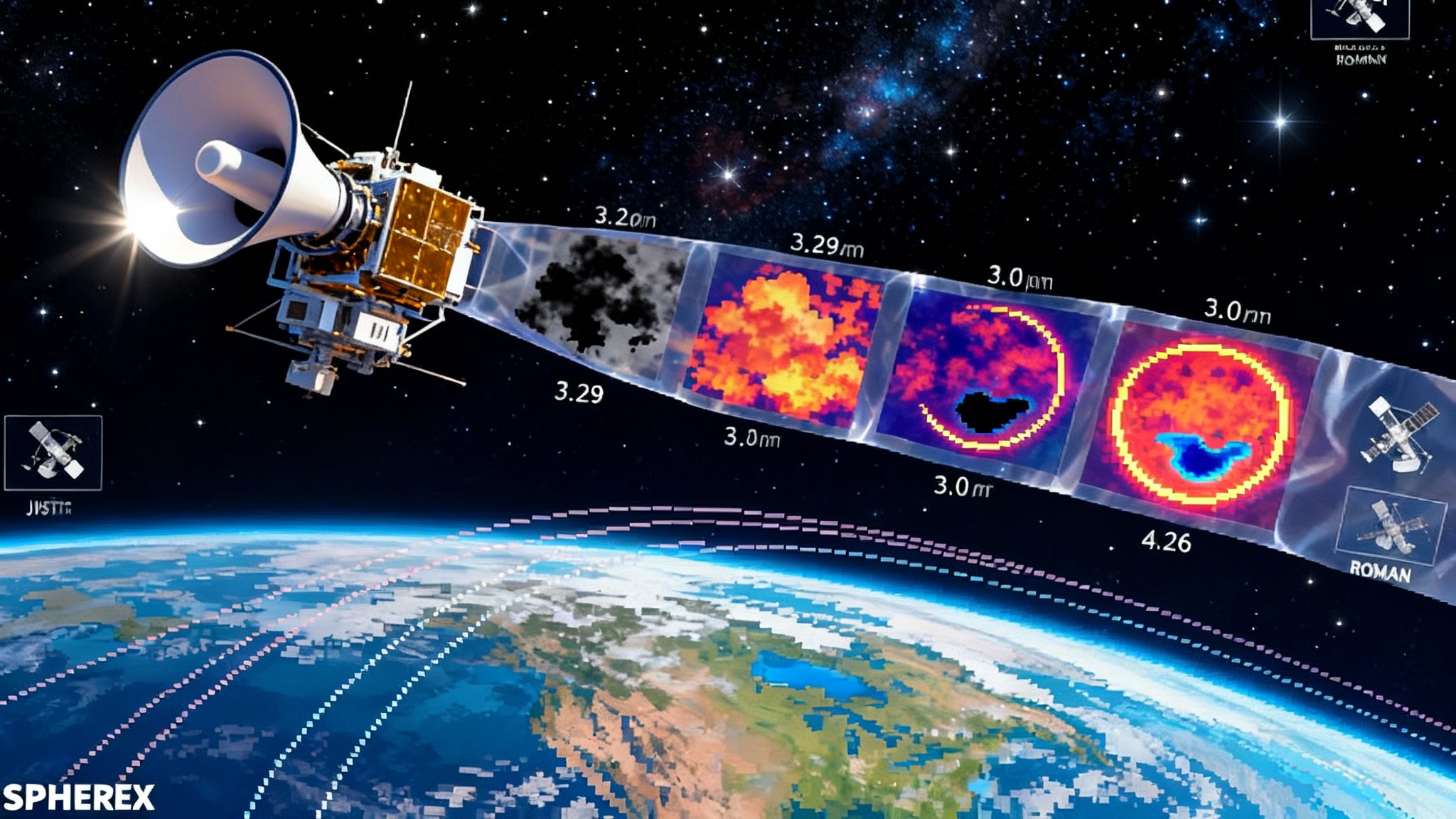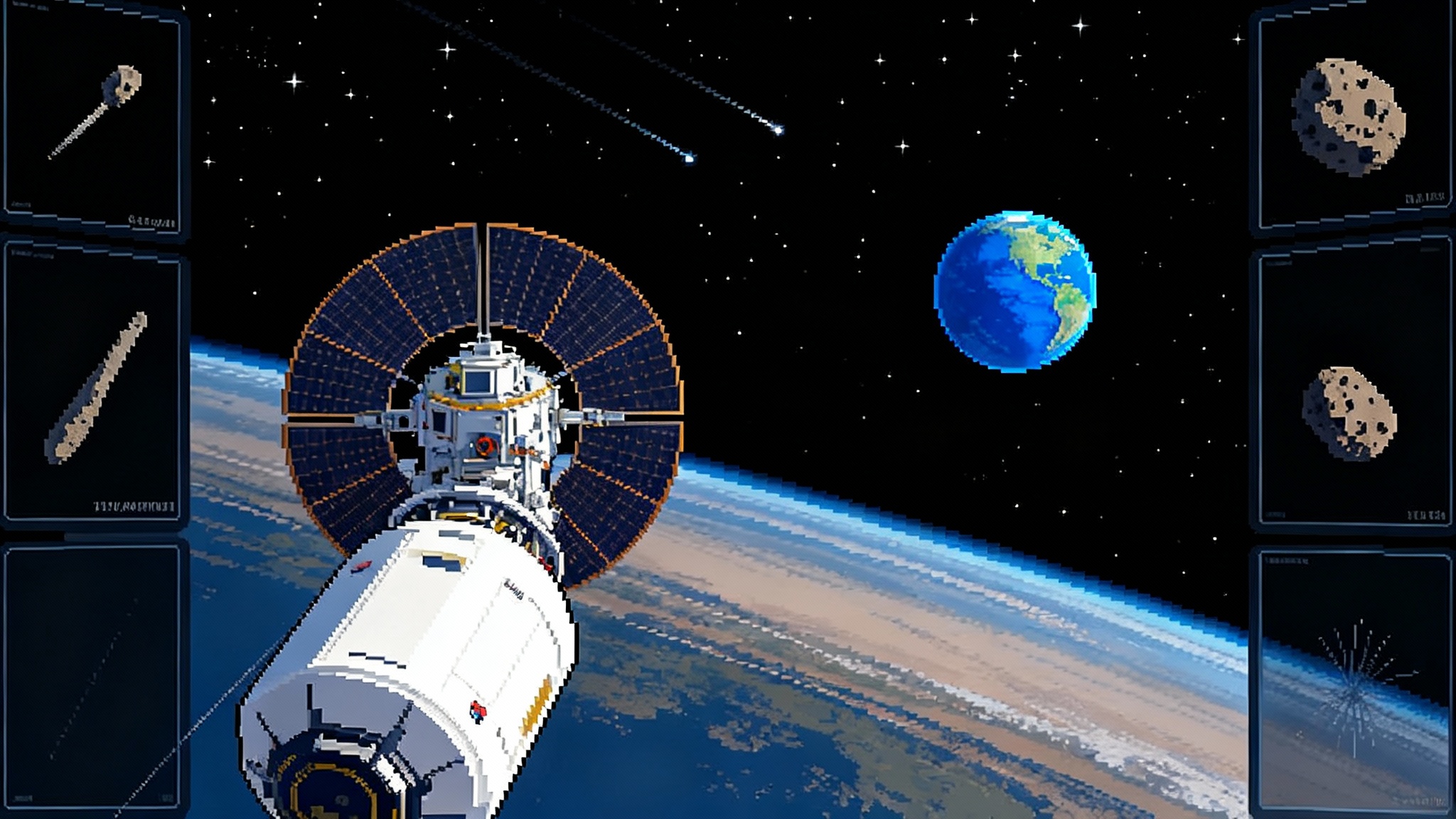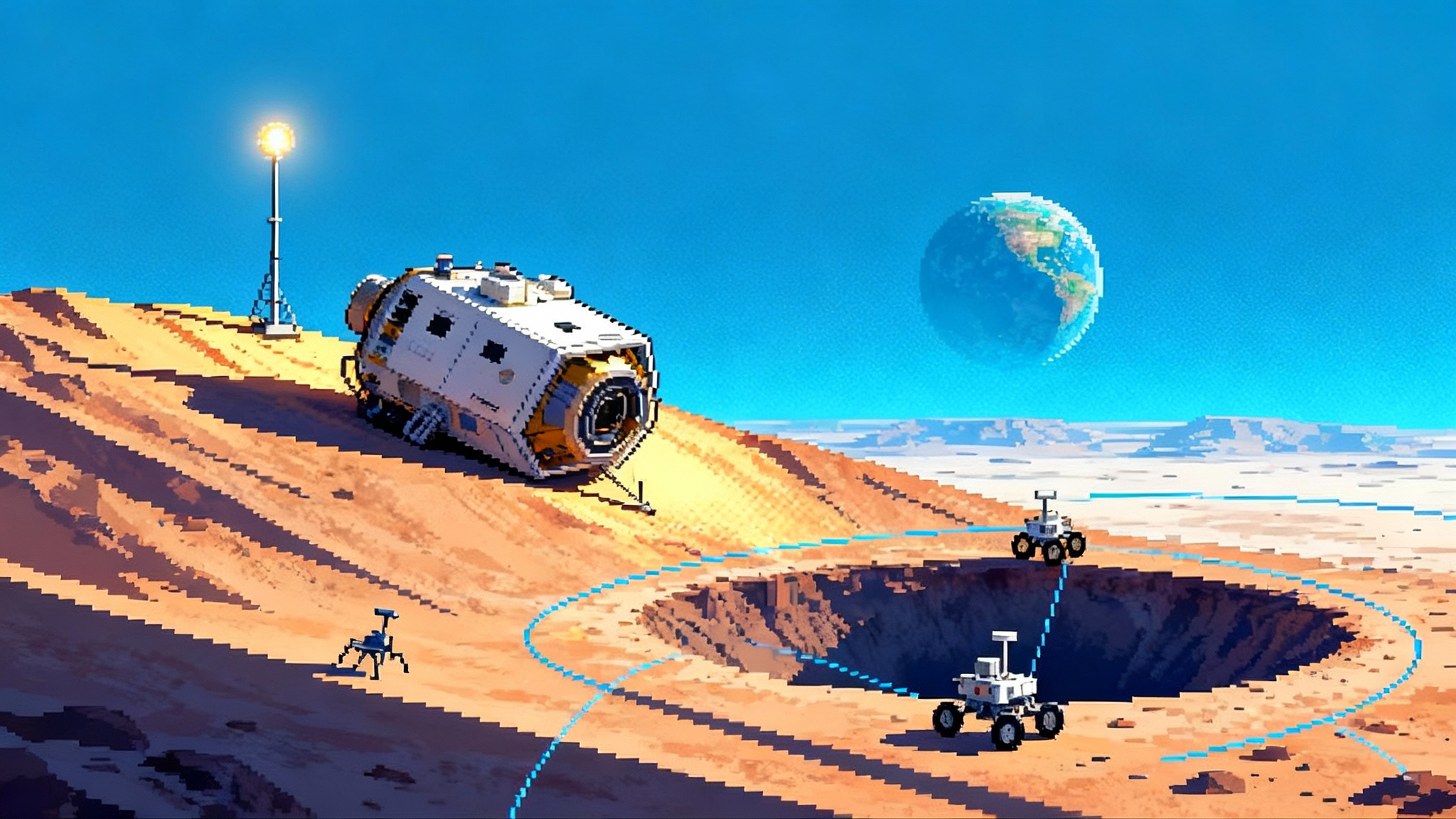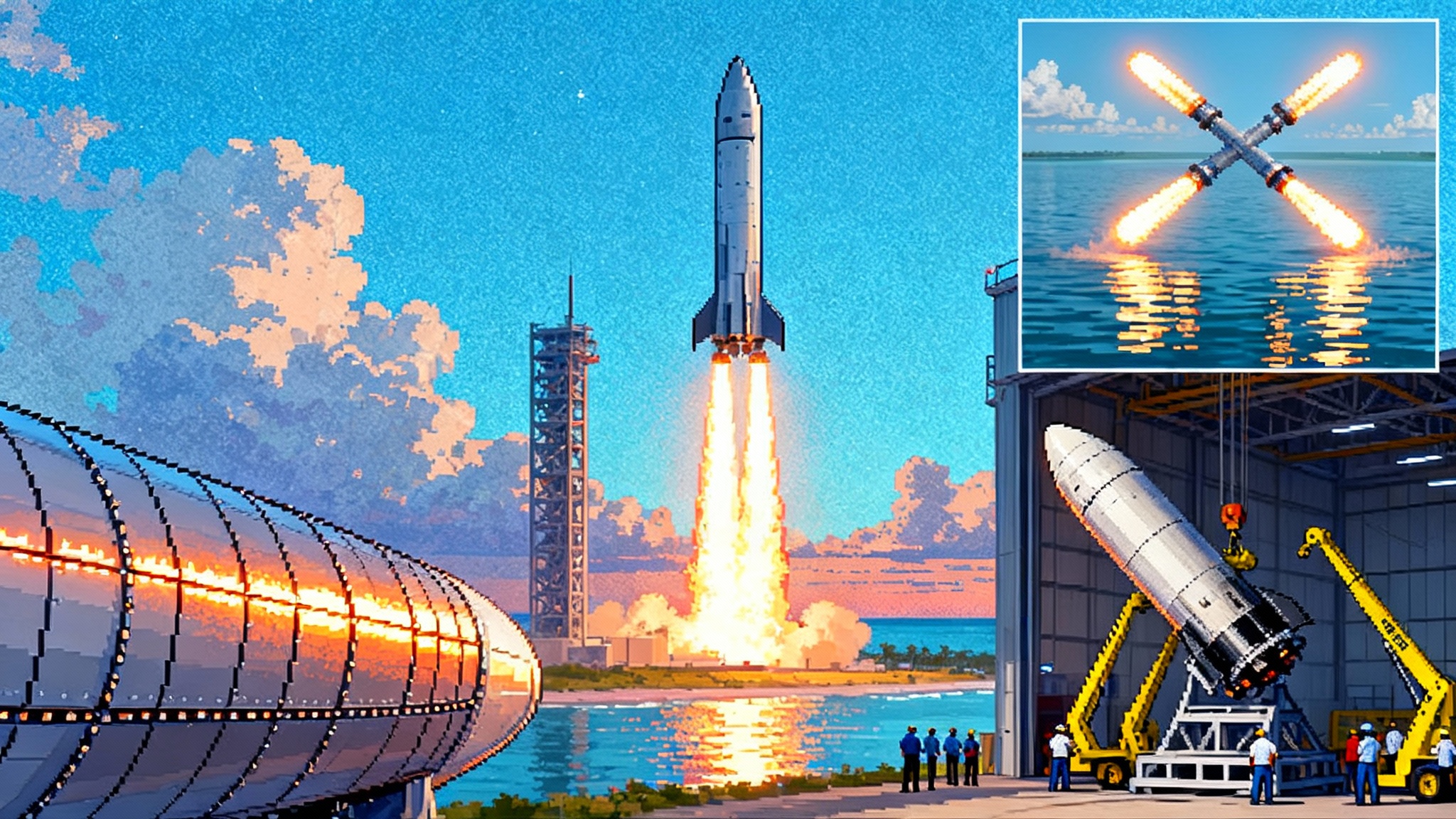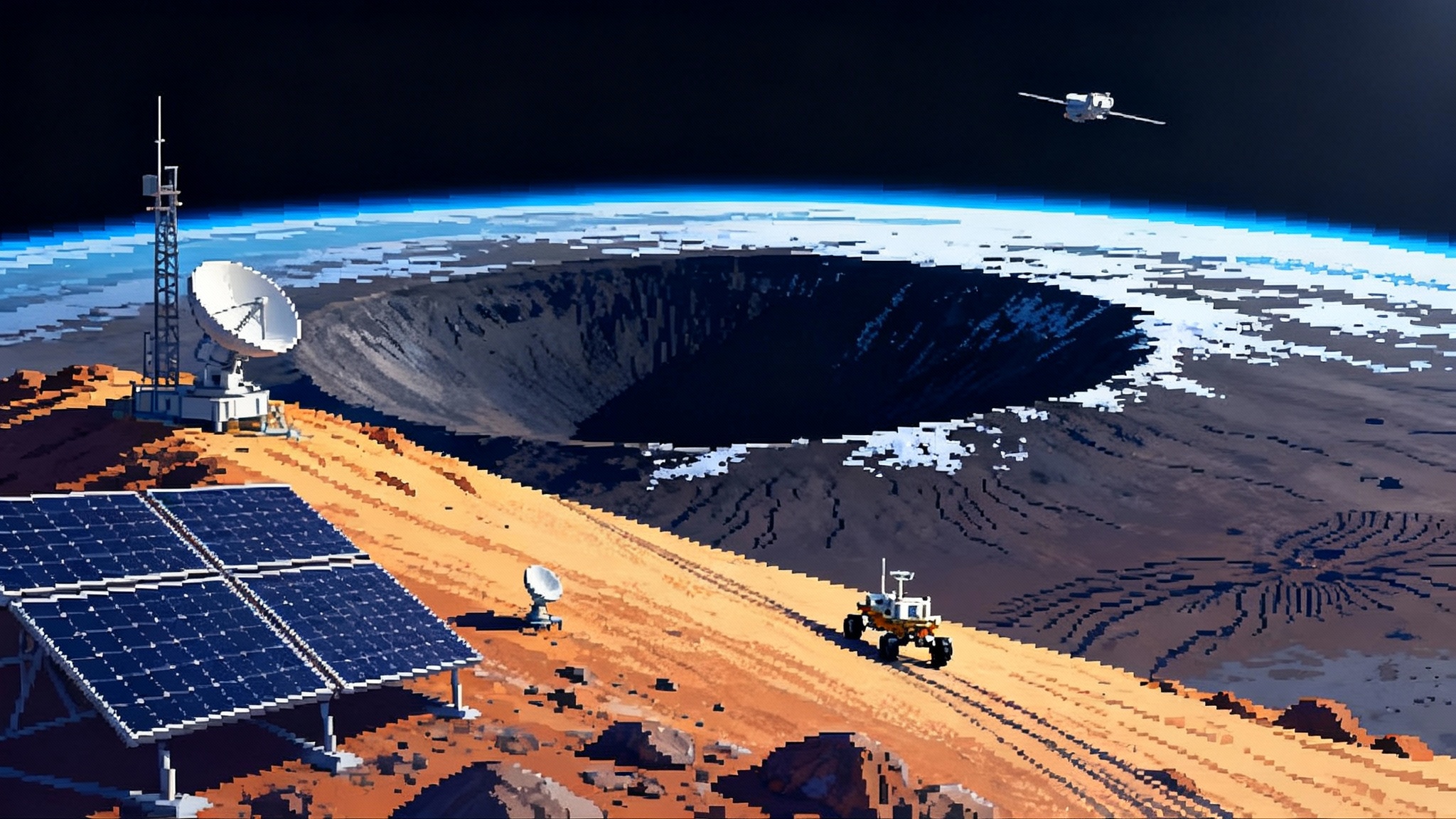MSR 2.0: NASA’s two-track race to bring Mars samples home
In 2025 NASA split Mars Sample Return into two competing designs to cut cost and time. Here’s how the heritage sky-crane path stacks up against industry heavy-lift options, what Europe’s orbiter contributes, and the milestones to watch before the 2026 downselect.
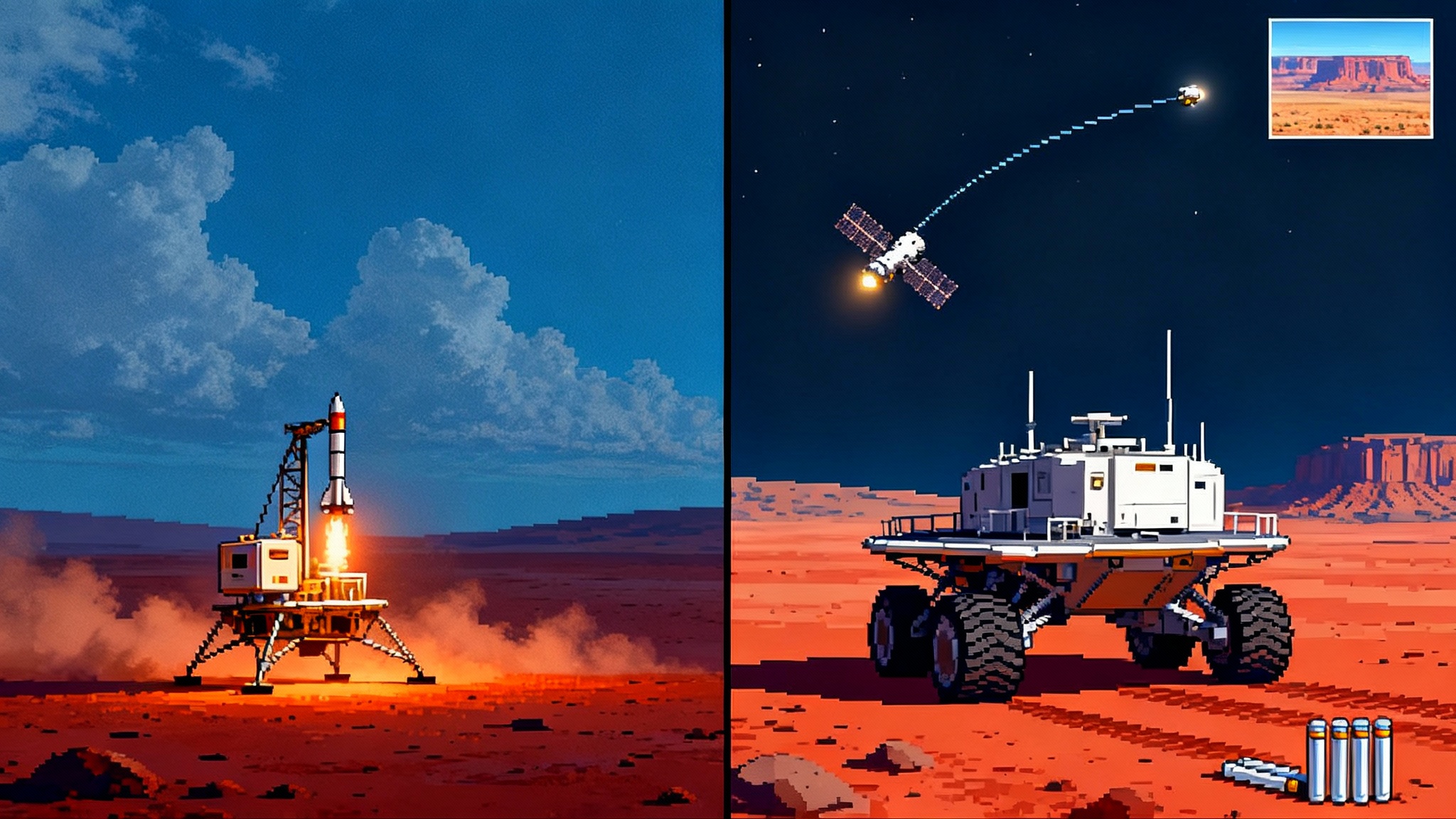
The quiet pivot that resets the Mars clock
In early 2025 NASA quietly rewired the most complex robotic mission it has ever tried. Instead of betting on a single blueprint to bring Perseverance’s cached rock cores to Earth, the agency formally split the mission into two competing landing architectures. The plan is to mature both, measure cost and schedule head to head, then pick one design in the second half of 2026. NASA’s own announcement describes this two-track approach, along with the decision to simplify the surface stack, lean on a radioisotope power system for reliability through dust season, and target about 30 sample tubes for return. See NASA’s explanation of the two landing architectures.
If the previous plan looked like a single, intricate Rube Goldberg machine, the 2025 plan looks more like a relay with two rival teams warming up on separate lanes. Both must pass the same baton, known as the Orbiting Sample container, from the surface to Mars orbit and into a European ferry for the trip home. But they are free to use different runners and moves for the first leg.
What “dual architecture” really means
“Architecture” is program-speak for how the pieces snap together. In practice it means two different ways to land the payload that matters most on Mars: a platform that receives the tubes collected by Perseverance, loads them into a small Mars Ascent Vehicle, and fires them into orbit.
- Architecture A sticks close to the playbook that landed Curiosity and Perseverance: a sky-crane descent stage lowers a compact lander into Jezero Crater terrain that the rover already knows. The lander trades solar arrays for a radioisotope power system that keeps the deck warm and powered through dust storms and long winters, and it carries a smaller two-stage Mars Ascent Vehicle.
- Architecture B invites industry to leverage new heavy hardware to reach Mars with fewer pieces and fewer handoffs. In some studies the heavy lifter simply delivers a beefier lander. In others, the vehicle itself becomes part of the architecture, acting as a cargo taxi that reduces the number of bespoke stages NASA must design and qualify. For background on the commercial system maturing fastest, see our Starship Flight 11 coverage.
Both must dock with the same runner in orbit: the Earth Return Orbiter that Europe is building. Both must honor the same planetary protection rules. And both are locked to the same finish line: a precision landing of a sealed Earth Entry System at the Utah Test and Training Range, followed by biocontainment transfer to a sample receiving facility on Earth.
Inside the streamlined heritage path
Think of the heritage option as a tuned version of what has worked twice already in Jezero. The sky-crane descent profile minimizes landing loads, a big deal when your deck holds a slender Mars Ascent Vehicle instead of a one-ton rover. Swapping solar arrays for a radioisotope power system gives you margin during global dust events and removes solar-array dust management from the to-do list. That simplification ripples through the schedule and the spares plan.
On deck, the choreography is deliberately boring. A heritage robotic arm transfers sealed tubes from a cache point or directly from Perseverance to an Orbiting Sample container. Importantly, NASA redesigned the loading to avoid letting dust accumulate on the outer shell of that container. In plain terms, the container that leaves Mars should be as clean on the outside as it was when it arrived. Fewer dust particles on the exterior means fewer headaches in the backward planetary protection analysis.
The Mars Ascent Vehicle is the smallest rocket any space agency has ever tried to light on another planet. A smaller MAV helps the whole lander shrink, making entry, descent, and landing more tractable. The trade is propulsion performance: a lighter vehicle must still place the Orbiting Sample container into a capture-friendly orbit where a chaser can grab it. That is where Europe’s spacecraft enters the story.
The commercial heavy-lift path, or “Starship-enabled” options
The industry-led lane is built around a simple idea: let the largest commercial systems do the heavy lifting and prune away NASA-unique hardware. In one version, a commercial heavy lifter inserts a more massive, integrated payload into Mars transfer, reducing the number of launches and the amount of in-space assembly. In another, the commercial vehicle’s own propulsion and volume become part of the surface or ascent solution, with NASA providing the sample handling, containment, and planetary protection chain.
NASA explicitly invited studies that lean on heavy commercial assets, including SpaceX’s super heavy system. One of the selected concept studies was titled Enabling Mars Sample Return with Starship. The upside is obvious: more mass margin buys you simpler mechanisms and fewer bespoke stages. The risks are also plain: schedule credibility depends on how quickly those commercial systems mature, how often they can launch, and how well they can survive the months-long cruise and entry environment at Mars. A heavy system can reduce interfaces, but it also concentrates risk in a small number of critical demonstrations.
For a sense of how fast ESA programs can move when designs are locked, see our look at Euclid 2025 releases. And for a parallel in sample logistics, track China’s asteroid mission in Tianwen-2 halfway update.
Europe’s Earth Return Orbiter is the courier and the traffic cop
No matter which surface playbook wins, Europe’s Earth Return Orbiter is the mission’s center fielder. It must find a basketball-sized container in Mars orbit, match orbits, and gently ingest it into a capture system. Once captured, the container is nested into an additional high-reliability capsule for the long flight home. Near Earth, the orbiter releases a blunt-body Earth Entry System on a precise trajectory to Utah. The orbiter then performs a deflection maneuver and continues on a safe path.
This orbiter is not a simple bus. It combines high-efficiency solar electric propulsion for cruise with a separate chemical module to punch into Mars orbit quickly. That mixed propulsion is one reason the orbiter has been moving through its own design reviews in Europe while NASA retools the surface segment. The net effect for readers: even as the surface competition heats up, the courier that brings the samples to Earth continues to advance.
Planetary protection gets a practical redesign
Planetary protection here means two things at once. Forward protection is making sure Earth dust and microbes hitch no ride to Mars. Backward protection is making sure anything from Mars is sealed on the way home and handled safely on Earth.
The 2025 tweaks matter. By redesigning how sample tubes are inserted, NASA aims to keep dust from accumulating on the outer shell of the Orbiting Sample container. That reduces the chance that Mars dust could migrate into the capture mechanism or ride home on the container exterior. Pair that with a simplified, radioisotope-powered lander and you get fewer dust-generating moving parts on the surface.
Back on Earth, the campaign leans on a sealed Earth Entry System that drops to the Utah Test and Training Range for rapid recovery. From there, the package moves to a sample receiving facility with layers of biocontainment and cleanroom controls. The goal is to allow scientists to get to work quickly while inspectors verify that nothing unwanted escapes, and that the samples themselves stay pristine enough to answer the mission’s central questions about ancient water, volcanism, and the chemistry of life.
Can competition really pull delivery into the 2030s at lower cost?
A fair reading of NASA’s 2024 and 2025 statements is that the old plan, as budgeted, drifted toward a 2040 return. The whole point of MSR 2.0 is to reset both levers at once: time and money. The agency says maturing two architectures in parallel promotes genuine competition, which historically keeps schedules honest and forces designs to defend every kilogram and every interface.
Here are the mechanics behind the promised savings and the earlier date:
- Fewer bespoke elements. If a commercial heavy lifter can absorb a function that previously required a new NASA-built stage, that knocks out unique design, production, and qualification streams.
- Lower integration complexity. Each interface is an integration campaign in miniature. Removing stages reduces the number of points where one contractor’s hardware must handshake with another’s.
- Heritage where it counts. The sky-crane path leans on flight-proven entry, descent, and landing. Mature mechanisms behave better in reviews, and they need fewer test-fail-fix cycles.
- Power margin. A radioisotope power system removes solar-array dust risk on the surface and narrows the list of worst-case scenarios that drive mass and cost.
- Planetary protection by design. Keeping the Orbiting Sample container clean on the outside simplifies verification and reduces the need for add-on containment tricks later.
None of this makes Mars easy. The gates between a 2030s return and a 2040s return are real demonstrations: a reliable Mars Ascent Vehicle, a capture system that works at orbital speeds, and a surface campaign that can survive the environment long enough to transfer 30 tubes. Competition does not eliminate those gates, but it gives NASA a second path through them if one team stumbles.
Head-to-head: how the rival concepts stack up
- Mass and margin. Heavy-lift concepts buy volume and propellant margin. That can simplify mechanisms and allow single-launch delivery of the lander. Heritage concepts are tighter on mass but lean on well understood descent hardware and smaller, faster-to-qualify stages.
- Schedule credibility. Heritage descent and a smaller MAV reduce the number of new technologies on the critical path. Heavy-lift schedules hinge on how quickly commercial systems can complete deep space demonstrations and Mars-relevant entries.
- Operations risk. Fewer stages and handoffs benefit the heavy path. But a single very large vehicle can also concentrate single points of failure. The heritage path spreads risk across smaller, more familiar elements.
- Cost exposure. Fixed-price bids from industry place more risk on the contractor, which can be attractive to a government program trying to hold the line in a flat budget. Heritage elements can reduce program risk but sometimes demand cost-plus flexibility when surprises appear.
- Compatibility with Europe’s orbiter. Both paths must standardize on the same Orbiting Sample container and capture interface. That is a built-in stabilizer for requirements creep.
The 2026 downselect and the next 12 months, decoded
NASA has said it intends to confirm the program and the selected design in the second half of 2026. Between now and then, here are the milestones and signals worth watching from October 2025 through October 2026. These are the tells that will show whether the race is tightening toward a 2030s return.
- Architecture maturation packages
- What to look for: formal documentation and risk-retirement test plans from both teams that show how they will meet the same capture and containment interfaces. Clear evidence of mass margins, thermal margins, and power budgets with contingency.
- Why it matters: numbers on paper must translate to credible margins that survive independent review. Watch for independent board feedback and whether those boards ask for redesigns or simply for data.
- Mars Ascent Vehicle propulsion tests
- What to look for: hot-fire tests and hardware-in-the-loop simulations that trace engine performance and ignition reliability under Mars-like temperatures and pressures.
- Why it matters: the ascent step is the narrowest gate in the whole chain. Early, clean test data prevents late redesigns that can push delivery beyond the 2030s.
- Earth Return Orbiter manufacturing and propulsion milestones
- What to look for: European announcements on structural test articles completed, solar electric propulsion units acceptance tested, and the chemical orbit insertion module integration schedule.
- Why it matters: the orbiter is a long-lead item. Smooth progress here keeps the courier on track while NASA finalizes the surface architecture.
- Planetary protection implementation tests
- What to look for: dry runs of the redesigned sample loading system, contamination control audits, and early exercises for the recovery and transport of the Earth Entry System from Utah.
- Why it matters: proving you can keep the container’s exterior clean and maintain the biocontainment chain is as important as the rocket science. It limits redesign risk near the end of the program.
- Budget signals in the Fiscal Year 2027 request
- What to look for: the 2027 budget proposal, typically released in early calendar 2026, should map steady funding through downselect and into preliminary design. Also watch for how much is reserved for industry fixed-price efforts versus in-house developments.
- Why it matters: if the funding profile aligns with test schedules and long-lead procurement, the 2030s target remains plausible. If it does not, expect reviews to push for descopes or rephasing.
- Industry claims versus demonstrated milestones
- What to look for: beyond glossy concepts, which teams deliver flight-like hardware, complete critical design reviews on time, and show real test results. Track record on other programs, such as lunar lander demos, is a useful proxy.
- Why it matters: the downselect will favor teams that turn marketing into metal and data. That is the only path that keeps the calendar in the 2030s.
- Interface definition with Europe
- What to look for: joint NASA-ESA updates that freeze the Orbiting Sample container dimensions, capture tolerances, and release conditions to Earth entry.
- Why it matters: late changes at this boundary are schedule poison. A locked interface lets both lanes optimize without fear of a moving target.
How readers can track the race without getting lost in acronyms
- Think in relays. The surface lander and Mars Ascent Vehicle run the first leg. Europe’s orbiter runs the long middle leg. The Earth Entry System and recovery team run the anchor leg. When you see a test, ask which leg got faster.
- Ask who owns the risk. Fixed-price promises sound great, but the proof is in test completions, not in bid language. Heritage sounds safe, but only if margins are real.
- Watch for interface freezes and margin charts. These are the big tells that a design has matured from slideware to hardware.
The bottom line
Mars Sample Return has always been a tale of audacity and patience. The 2025 pivot swaps a single complicated tower of blocks for a race between two simpler stacks. One lane leans on what has worked at Mars. The other bets that commercial heavy machines can carry more and cost less. Both must hand the same sealed container to a European courier and both must land a tiny capsule safely in Utah. If both lanes keep hitting their marks over the next year, NASA will have the rare freedom in 2026 to choose between two credible ways to bring the most important rocks of the decade back to Earth.
The stakes are not abstract. Those tubes hold a time capsule of ancient river deltas and volcanic ash. They could rewrite the early history of a world next door. The new approach does not guarantee speed or thrift. What it does is inject competition where it matters and focus the program on the parts that make or break the mission. That is how you turn a 2040s dream back into a 2030s delivery. And that is why the next 12 months, dry as they may seem, will be the most important year in Mars science you cannot yet see through a telescope.
